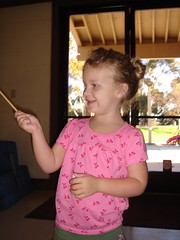[this is a version of a post which first appeared on my blog From the Front of the Choir]
I watched a TV documentary the other day called How a choir works with Gareth Malone.

At one point he talked about the role of the conductor. He said how it’s possible for the conductor to control things such as volume, tempo, quality, etc. using hand gestures.
I’ve written before about How to use gestures to conduct your choir effectively, but watching this programme made me wonder: how much of the job of perfecting a piece is down to rehearsing, and how much can be left to the performance itself?
In other words, how much of the work can be done by the conductor in the moment, rather than by drilling in the rehearsal room?
When I first started choral conducting, like many other community choir leaders I had no specific training in the art. I had a good sense of timing and musicality, and kind of blundered through with a few basic gestures.
Over time I have refined these gestures and in their turn, the choir have become more attentive to me in general and to subtle changes in my hand waving. I feel that I have far more control in performance than I ever did and the choir enjoy (I hope!) being able to respond in the moment.
I might decide to take a passage much more quietly than we ever did in rehearsal because I am aware that the audience is really listening and being super-attentive.
I might decide to repeat a section because things are going really well, the audience is clearly enjoying the song, and it would be great if it went on a little longer.
Because of the acoustic of the space I might decide to repeat the ending several times more than in rehearsal because the effect of getting quieter and quieter can be clearly heard and is much more effective in this space than in our rehearsal room.
And so on.
If we have a good, clear, fairly large repertoire of conducting gestures, might we not just practice the notes and singing quality (vocal technique, lyricism, breathing, etc.) of a song in rehearsal, but leave the overall structure and dynamics of it until the actual performance?
In this way the choral director becomes more of a musician who is ‘playing’ the ‘instruments’ (voices) that are available.
Do others of you leave more (or less) scope in the actual performance, or are you happier with totally nailing things down in rehearsal?
Personally I’m always in favour of leaving a little space for improvisation or responding to the moment — it keeps the choir on their toes and means that the song becomes truly alive!
Chris Rowbury: chrisrowbury.com